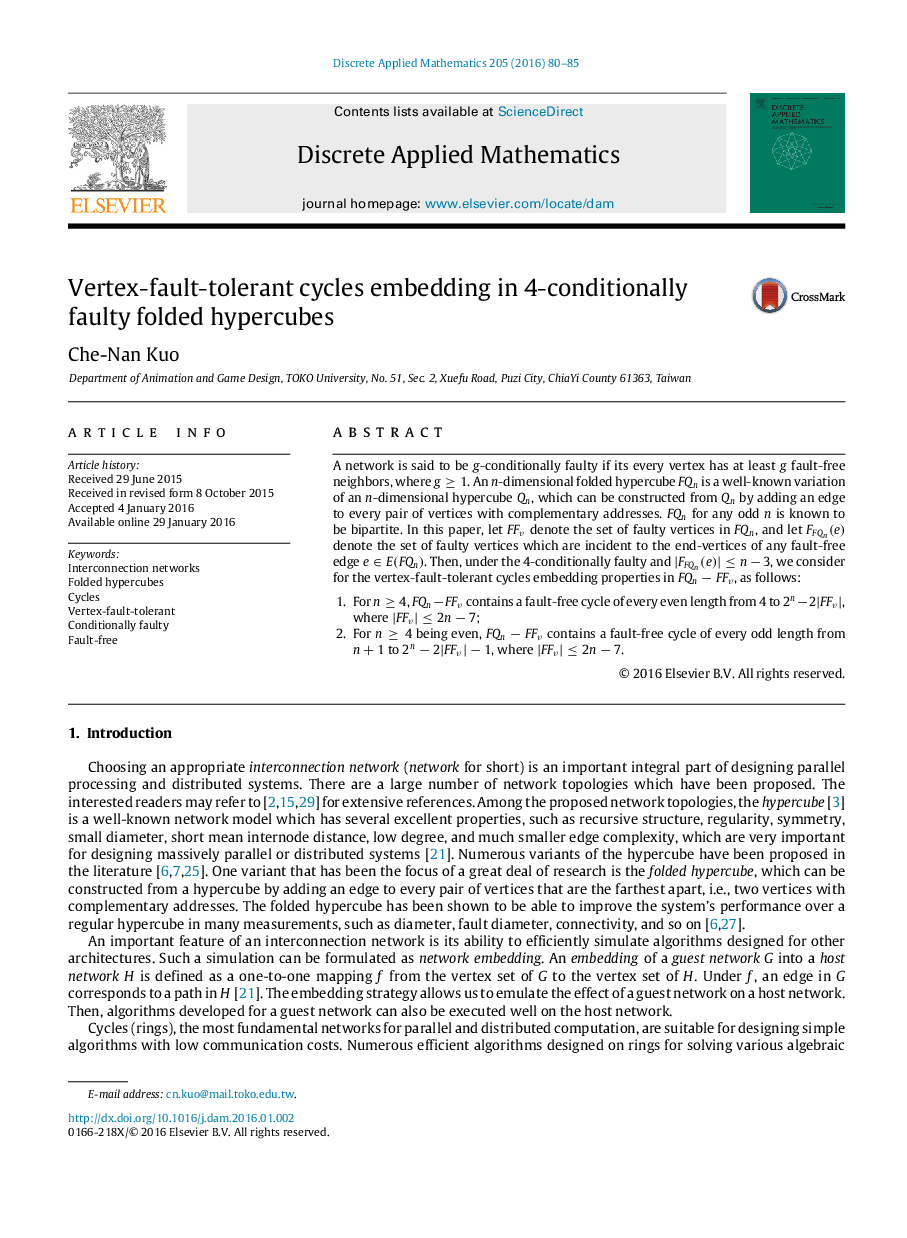| Article ID | Journal | Published Year | Pages | File Type |
|---|---|---|---|---|
| 419237 | Discrete Applied Mathematics | 2016 | 6 Pages |
A network is said to be gg-conditionally faulty if its every vertex has at least gg fault-free neighbors, where g≥1g≥1. An nn-dimensional folded hypercube FQnFQn is a well-known variation of an nn-dimensional hypercube QnQn, which can be constructed from QnQn by adding an edge to every pair of vertices with complementary addresses. FQnFQn for any odd nn is known to be bipartite. In this paper, let FFvFFv denote the set of faulty vertices in FQnFQn, and let FFQn(e)FFQn(e) denote the set of faulty vertices which are incident to the end-vertices of any fault-free edge e∈E(FQn)e∈E(FQn). Then, under the 4-conditionally faulty and |FFQn(e)|≤n−3|FFQn(e)|≤n−3, we consider for the vertex-fault-tolerant cycles embedding properties in FQn−FFvFQn−FFv, as follows: 1.For n≥4n≥4, FQn−FFvFQn−FFv contains a fault-free cycle of every even length from 44 to 2n−2|FFv|2n−2|FFv|, where |FFv|≤2n−7|FFv|≤2n−7;2.For n≥4n≥4 being even, FQn−FFvFQn−FFv contains a fault-free cycle of every odd length from n+1n+1 to 2n−2|FFv|−12n−2|FFv|−1, where |FFv|≤2n−7|FFv|≤2n−7.
